A group of 28 East Cheshire Ramblers spent the weekend in Dolgellau. Everyone found their own accommodation and evening meals were organised for Friday and Saturday. On Friday, 19 ramblers enjoyed a meal at the Royal Ship Inn with very attentive service and substantial plates of food. We had a private area of the pub, enjoyed catching up with old friends and making new ones. A good start to the weekend. On Saturday, a group of 21 enjoyed a varied menu at Y Sospan, where we had our own little area on the raised dais of what used to be the Dolgellau Courtroom.
As for the walking, despite absolutely dire weather predictions, we had perfect walking weather on the walks. A big thank you to all the walk leaders: Steve Rawlings, Ann Thompson (doubly for leading 2 walks), Jane and Frank Gay, Sue Munslow and Jane Rawlings.
Saturday 15th June Long Walk (Steve Rawlings)
13 miles / 2330ft ascent (OS)
With the heavy rain miraculously ceasing around 9am, we started off at 9.30 on the steady, gentle ascent to Precipice Walk (PW). As we were a small group (of six) and paths were quiet, we chose to include PW – a fine decision, it transpired. Elevenses just after PW, then on around the base of Foel Offrwm. Photo-shoot under the massive arch known as Y Garreg Fawr. Partial success through the tricky bit around Ty-hir; the mire avoided but some impromptu stile-building required.
Lunch near Tyn-Twll, then a beautiful stretch through Planfa Fawr woodland. Steady ascent up Torrent Walk in dappled sunlight, and a refreshment break at the top. Mainly downhill after that, on quiet paths through Tabor and Trefeilia. Super day.





Saturday 15th June Medium Walk (Ann Thompson) – 10.3 miles, moderate, 1500 ft ascent
BARMOUTH TO DOLGELLAU
18 ECR members met at the bus stop in Dolgellau and caught the bus to the edge of Barmouth. We started by feeding the troll with £1 coins as an honesty payment to cross the rail bridge. We made it across just before the 10km Barmouth race started and only came across them once when we needed to cross their path. Our coffee stop was at the delightful Arthog church. The route then took us steeply up the nearby waterfall with splendid views of tumbling water. Crossing open land, the lunch spot was reached providing picnic tables and a toilet adjacent to Llynnau Cregannen. The afternoon saw us walking adjacent to open moorland via Kings Youth hostel, up over Craig Castell moorlands on a narrow stony drove lane and descending into Dolgellau. A varied route enjoyed by all and mostly good weather – just of couple of short showers.





Saturday 15th June Short Walk (Jane & Frank Gay)
7 miles, 910 ft Ascent (OS Maps)
Six walkers met at Penmaenpool Car Park (near George III pub) and followed the Maddach trail in an easterly direction to the bridge where the A493 crosses Afon Wnion. We climbed up to Bryn Farm, through the woodland and over the hillside around Dolgledr to Cae n y-coed. After crossing the A493 we followed the streamside path through Abergwynant to join the Maddach trail again back to the starting point, finishing with a well-deserved drink in the pub.

Sunday 16th June Long Walk (Ann Thompson)
9 miles, 3100 ft Ascent, Cader Idris using the Minffordd path.

Twelve of us met for the 9.02 bus to Minffordd which was a scenic run over and down Afon Fawnog valley. After a short warm up through woodland we were soon climbing steeply on steps and rocks beside a splendid waterfall. Passing a slate bridge, the gradient lessened and eventually Lyn Cau came into view. It sits in the hollow of a splendid cwm with some vertical walls. More tough ascent took us to the top of Craig Cau, followed by an even steeper descent and final ascent on some loose rocky material to reach the Trig Point on the summit of Cadair Idris. The views were magnificent for most of the day with some brief spells of low cloud. After lunch on the top, we followed the ridge to Myndd Moel and Grau Graig then descended quite steeply to Bwlch-Coch. The return to Dolgellau was down minor roads and lanes with some attractive woodland sections in between. A really good mountain walk in excellent weather.


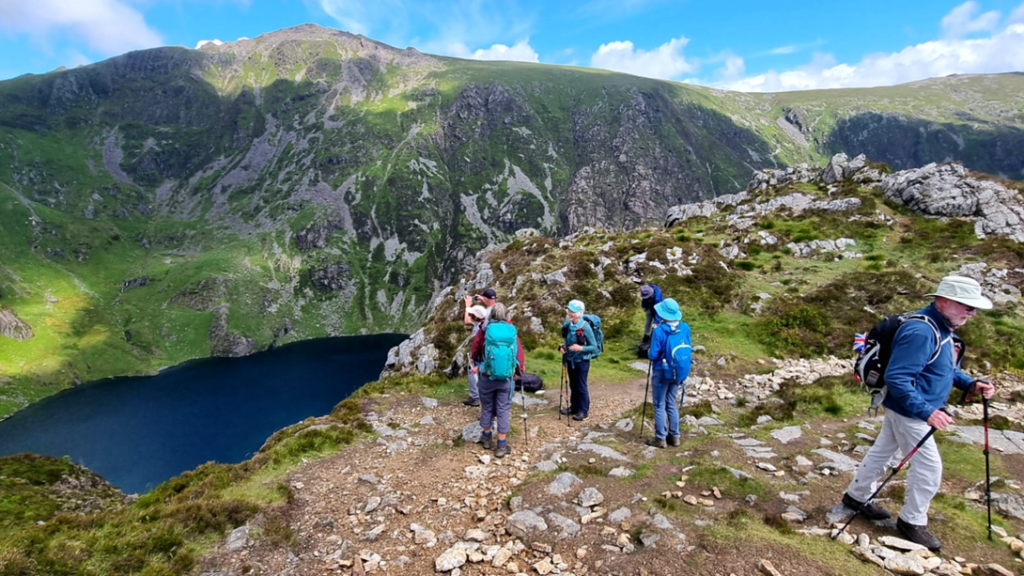
Sunday 16th June Medium Walk (Sue Munslow)
10 miles, 2136 ft Ascent
Four ramblers met at Fiddlers Elbow, just outside Bontddu. The route took us steadily up to the tops of the moorland where we found a flat, smooth old mining track along the side of the upper moorland, which is now referred to as the New Precipice. As it was a lovely sunny day we had spectacular views in every direction. We looked across the valley southwards at Cadair Idris Mountain and surrounding ridges.
Below was the meandering river and estuary of the Afon Mawddach as it flowed towards the sea at Barmouth. To the east we could see the other Precipice Walk as it wound its way around the hillside.
We continued to walk through an area of wild upper moorland with occasional cottages before walking down by a beautiful river valley of spectacular waterfalls and a gold mine. Finally, we walked along the edge of the Afon Mawddach again with a lovely view of the river back to the CP. We completed our walk with tea and cakes at Y Sospan back in Dolgellau.
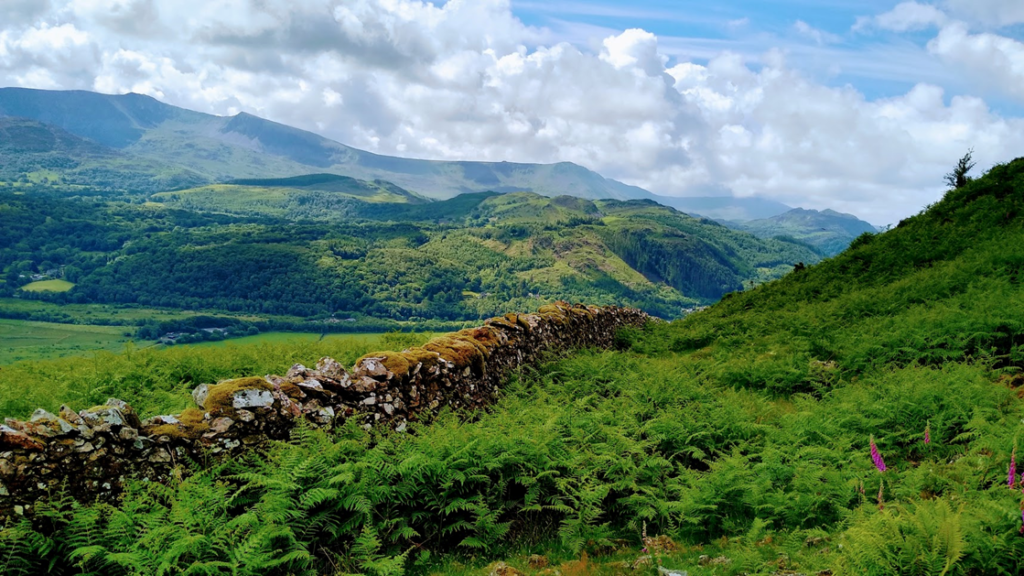
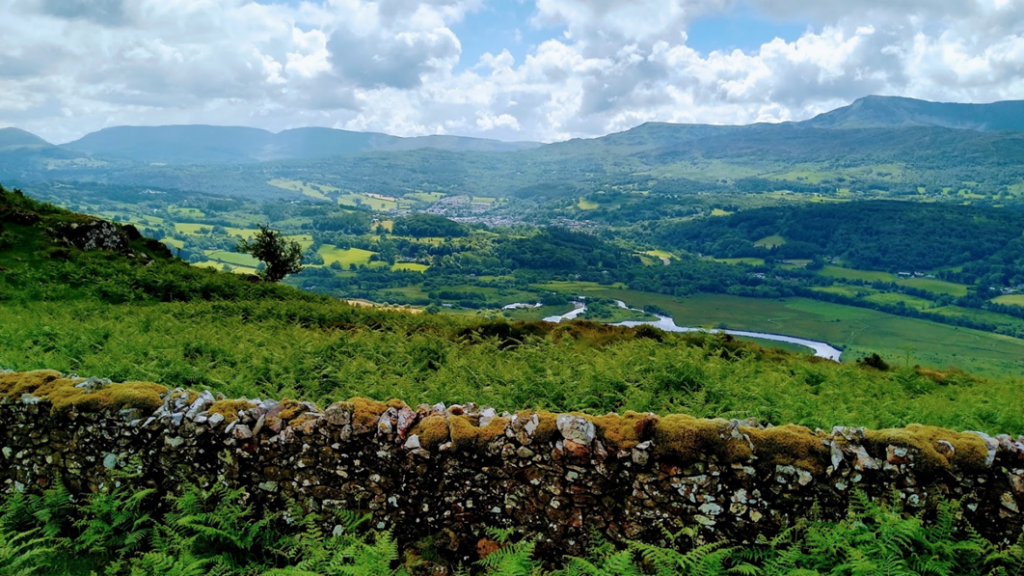
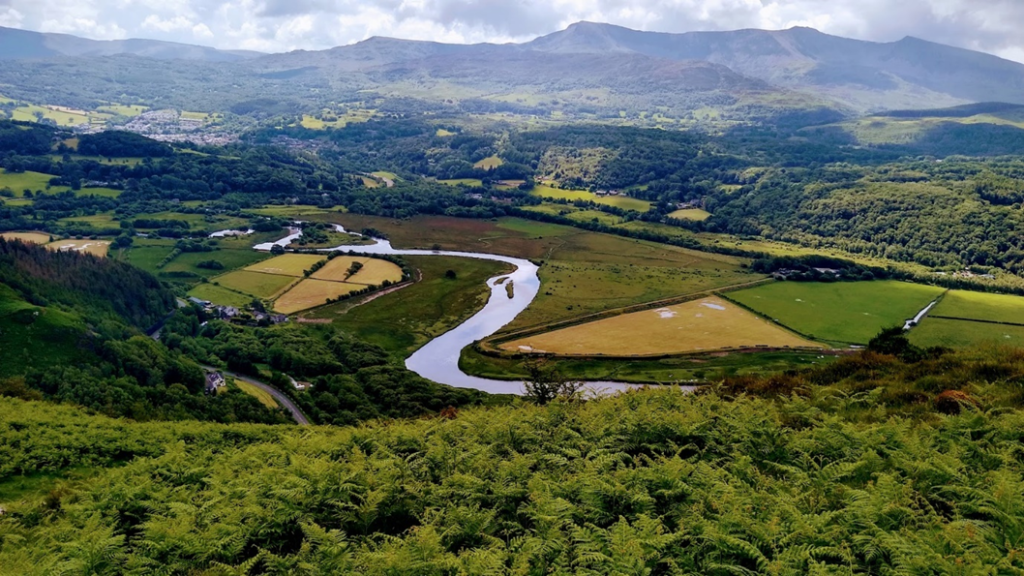
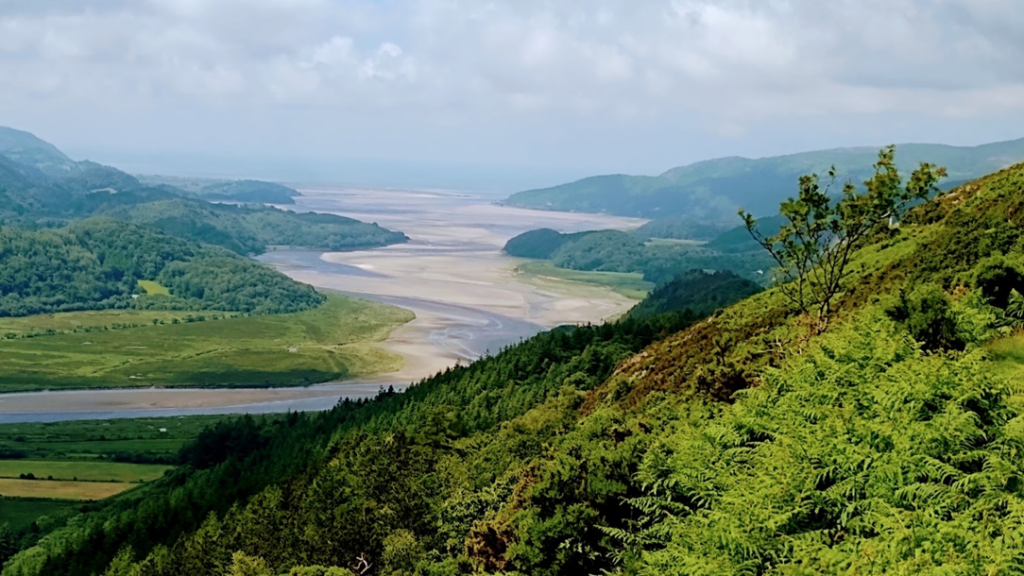
Sunday 16th June Short Walk (Jane Rawlings)
6 miles, 1050 ft Ascent
A group of ten ramblers enjoyed the sunshine and company on the Sunday short walk. We followed an undulating route through the wooded areas south of Dolgellau. Using footpaths, tracks and quiet lanes we passed through Pandy, Tabor, Pandy Gadar and Esgeiriau. We were fortunate to have good views of the surrounding hills. We ended up in Dolgellau where we sampled cake, ice cream, soft drinks and beers.






















